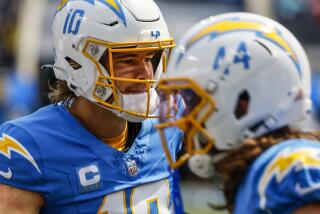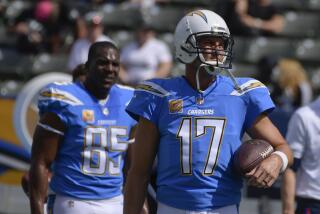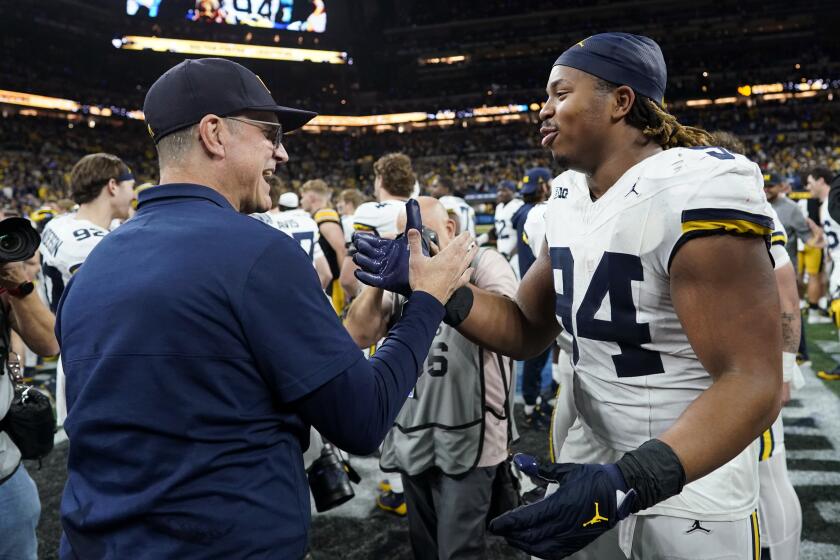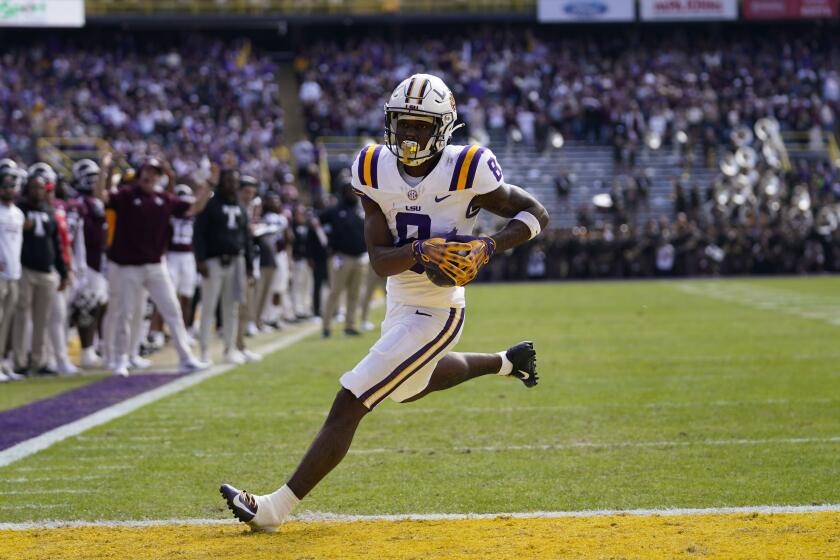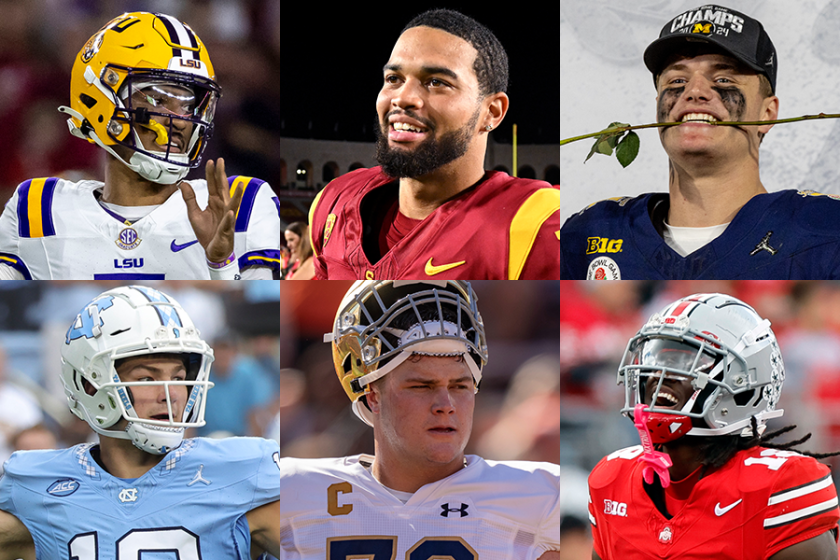Chargers quarterback Philip Rivers may not have the best looking mechanics, but results tell a different story
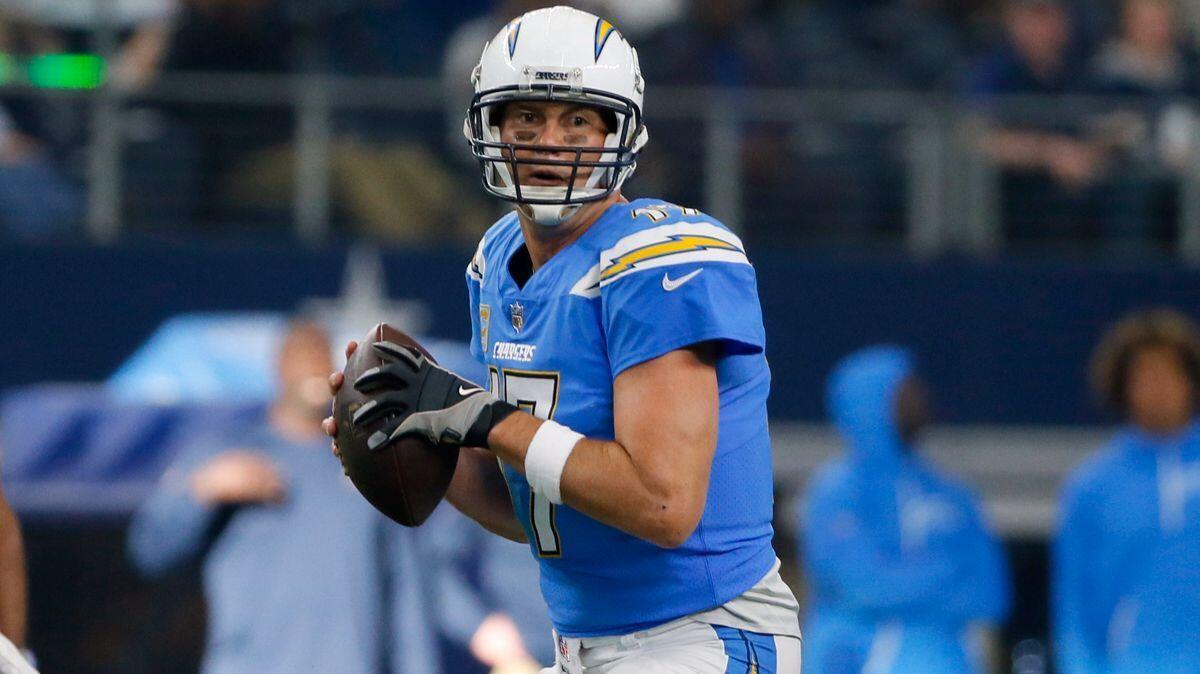
An expert would watch Lakers rookie guard Lonzo Ball shoot a basketball and wince. Chargers quarterback Philip Rivers would watch the funky release and, in a way, relate.
While Lakers coaches and management scratch their heads and wonder how to get their prized pick to shoot the ball more conventionally, there’s a working example of what happens if you don’t change a release — if you let weird stay weird.
Rivers has thrown for 48,781 yards — or 27.7 miles worth — in regular-season NFL games. That’s more than all but nine quarterbacks in the league’s history, and Sunday against the Cleveland Browns at StubHub Center, Rivers will continue his path up that ladder.
And, he’ll do it with a throwing release stranger than any of the quarterbacks ahead of him.
“I call him the ‘javelin thrower,’ said quarterback guru Norm Chow. Rivers’ first offensive coordinator at North Carolina State.
Chow saw Rivers throw for the first time after he arrived on campus a semester early, enrolling in January to get a chance to go through spring practice with his team. Chow, who had just gotten the job, saw Rivers tossing the ball to his receivers.
And he got nervous.
Chow had always believed that the throwing motion itself wasn’t the most important thing. Hips, footwork and vision were what mattered most.
But this looked weird enough to make his question those beliefs.
“(Chow) asked me, ‘Is your shoulder all right?’ He was wondering if I was hurt,” Rivers said.
Chow was curious enough that he reached out to a buddy, Mike Holmgren, who was the coach of the Seattle Seahawks at the time, to discuss his new quarterback, and his throwing motion.
“Mike said, ‘Does he throw completions?’ I said, ‘Yes.’ ” Chow remembered. “ He said, ‘Well, then leave him alone.’
“He just reconfirmed what I already had known. You’re not going to change a young man’s motion when he’s 19 years old — maybe when he’s 7 or 8. But when he’s 19 and had the success that he’s had, I don’t think you worry too much about it. His timing was terrific. The accuracy was terrific. Why mess with it?”
Rivers’ mechanics would become a topic four years later as he prepared for the NFL draft.
Anthony Lynn, who was then working his way around the league as an assistant, remembers that some scouts thought Rivers’ release was too low, his mechanics too flawed, for him to sustain success.
“You always have doubters,” Lynn said.
Rivers’ future coach wasn’t one of them.
“I’ve always been a pattern guy. If you’ve been successful doing something you’re whole life, I believe you’re going to figure out a way to get it done, no matter what level you’re on,” Lynn said. “We felt like he would be a successful NFL quarterback because that’s something he’s been doing, and he’s been highly successful at it. … I wouldn’t want to change anything about it.”
Rivers’ motion wasn’t a finished product when he reached the NFL. In his first year as a starter in San Diego, quarterbacks coach John Ramsdell tightened Rivers’ release and improved his ball position. But the side-armed, javelin motion? That went untouched.
It’s how the current Chargers quarterbacks would’ve handled it, too.
“I don’t really care. If I’m coaching quarterbacks … I don’t care how it gets there,” Kellen Clemens, Rivers’ backup, said.
Cardale Jones said the people selling young quarterbacks on the importance of the perfect throwing motion aren’t helping all that much.
“That’s all some bull,“ Jones said.
Chow’s sentiment was the same.
“So you’ve got a hitch in the giddy-up,” Chow said with a chuckle. “Big deal.”
It’s a remarkable attitude, all things considered. After all, football is as precision-based as team sports get — 11 players working in concert to try to execute plays spoken in essentially a foreign language. The receivers must move specific ways at specific times. The offensive linemen have to push defenders in a way to create a pocket of space.
Everyone has an exact job with pretty fixed techniques — except for the most important player on the field.
“As long as it gets there,” coaches and players all said.
Meanwhile, Ball’s mechanics are being pointed to by some for his poor shooting to start his rookie season. He’s shot 40% or better in just six of his first 21 NBA games.
“I’m no basketball expert and I haven’t studied him, but to me, they’re the same questions,” Rivers said. “Is the release slow? Is he inaccurate? Can he not shoot? Those are the questions you ask.”
If the answers point in the direction of a mechanical rebuild, it’s problematic. It’s something Rivers couldn’t even imagine having to tackle.
“It’d be hard,” he said.
Chow, his old coach, was even more blunt.
“It’s not worth it,” he said.
Twitter: @DanWoikeSports
More to Read
Go beyond the scoreboard
Get the latest on L.A.'s teams in the daily Sports Report newsletter.
You may occasionally receive promotional content from the Los Angeles Times.
